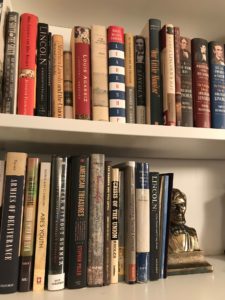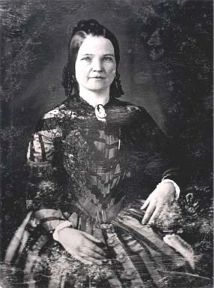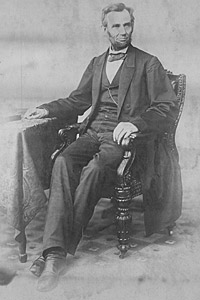 Abraham Lincoln is best known for his Emancipation Proclamation, Gettysburg Address, and saving the Union during the Civil War. But in this Black History Month it’s important to remember that Lincoln also pushed for black voting rights.
Abraham Lincoln is best known for his Emancipation Proclamation, Gettysburg Address, and saving the Union during the Civil War. But in this Black History Month it’s important to remember that Lincoln also pushed for black voting rights.
The Emancipation Proclamation declared “that all person held as slaves” within the states in rebellion “shall be then, thenceforward, and forever free.” Issued as a war measure – the only authority he had under the Constitution – Lincoln then began work that led to the 13th Amendment to permanently end slavery in all the United States. The struggle to pass the amendment was dramatically characterized in Steven Spielberg’s 2012 movie, Lincoln.
These two major steps set the stage for further African-American rights, which were enhanced by passage of the 14th and 15th Amendments to the Constitution. While these two acts occurred after Lincoln’s assassination, they were set in motion by Lincoln’s leadership at the end of the Civil War.
Most notable was Lincoln’s April 11, 1865 speech from the White House. Among other points, Lincoln spoke about reconstruction efforts in Louisiana. He encouraged all Louisianans to join in the process of bringing the state back into the Union. He pressed for black voting rights:
It is also unsatisfactory to some that the elective franchise is not given to the colored man. I would myself prefer that it were now conferred on the very intelligent, and on those who serve our cause as soldiers.
While this seems a rather mild support for African-American suffrage, it was actually radical for its time. Lincoln understood that for many, if not most, Northerners, being anti-slavery did not necessary mean they were for equal rights for free or freed black men. [The fact that women of any color were not allowed to vote was not lost on Lincoln, who years before had suggested women might also be allowed to cast their ballots. This is an important point in this 100th anniversary year of women’s suffrage.] In any case, Lincoln was pushing as gently as he could the idea that black men should have the same rights under the law as did white men, including but not exclusively the right to vote.
His inclusion of this point in the speech was not an ad lib. The previous night when a gathering crowd had asked for a speech he deferred, stating that such a speech should be thought out and not given off-the-cuff. He spent the next day carefully wording his remarks, from which he read verbatim, dropping each page behind him as he orated out the White House window. He meant to push the idea of black voting rights. This was his first public statement of such, and one member of the audience on the White House lawn who heard it – John Wilkes Booth – stated that Lincoln’s advocacy for the black vote was what made Booth decide to assassinate the President.
Lincoln had also been pressing the Louisiana government and the U.S. Congress in private letters to allow African-American voting. It was not a popular sentiment, and as such Lincoln walked a fine line between pushing the idea and not wanting to force the issue for fear of losing any progress toward reconstruction. He was careful, but he still encouraged the idea. April 11th was his way of bringing the pressure public so the public themselves could start getting used to the idea. He knew, like the Emancipation itself, that leading the public with small doses of progressivism made it easier to swallow large changes. Pressing too hard created defensive postures and worked against progress.
Black leaders like Frederick Douglass were understandably impatient with incremental approaches like Lincoln’s, but Douglass himself understood the limitations of coercive force. It would be for Douglass and his fellow activists to keep the issue public, while allies like Lincoln pushed internally for change. We see this repeatedly in history, including the sometimes painful but effective interactions between Dr. Martin Luther King and President Lyndon Johnson to pass the 1960s era Civil Rights Acts.
Current presidential candidates would be wise to study Lincoln and his times (and Lyndon Johnson and his times) as they deal with a resurgence in voter suppression activities that strive to disenfranchise the votes of racial, religious, and other minorities in this nation.
David J. Kent is an avid science traveler and the author of Lincoln: The Man Who Saved America, in Barnes and Noble stores now. His previous books include Tesla: The Wizard of Electricity and Edison: The Inventor of the Modern World and two specialty e-books: Nikola Tesla: Renewable Energy Ahead of Its Time and Abraham Lincoln and Nikola Tesla: Connected by Fate.
Check out my Goodreads author page. While you’re at it, “Like” my Facebook author page for more updates!



 Disheveled as he was when he showed up on the doorstep of the venerable Western Union Company, Edison was confident that management would see through the rough exterior into his insightful mind. The company had made a name for itself even before the Civil War, but the rampant use of telegraphy during the conflict enabled Western Union to grow immensely, swallowing up its nearest competitors and becoming a force in the industry. This was just the opportunity Edison was looking for. During his initial interview, office manager George Milliken was so impressed with the 21-year-old that he hired him immediately. Milliken asked how soon Edison would be ready to work, to which Edison replied “Now.” He was put to work on the shift that day at 5:30 p.m.
Disheveled as he was when he showed up on the doorstep of the venerable Western Union Company, Edison was confident that management would see through the rough exterior into his insightful mind. The company had made a name for itself even before the Civil War, but the rampant use of telegraphy during the conflict enabled Western Union to grow immensely, swallowing up its nearest competitors and becoming a force in the industry. This was just the opportunity Edison was looking for. During his initial interview, office manager George Milliken was so impressed with the 21-year-old that he hired him immediately. Milliken asked how soon Edison would be ready to work, to which Edison replied “Now.” He was put to work on the shift that day at 5:30 p.m. David Wiegers is a photographer. He is also an Abraham Lincoln fan. He has combined those two interests into a calendar featuring photos of Lincoln statues from around the world. January is the statue in Edinburgh, Scotland.
David Wiegers is a photographer. He is also an Abraham Lincoln fan. He has combined those two interests into a calendar featuring photos of Lincoln statues from around the world. January is the statue in Edinburgh, Scotland.

 Several times in 1858 Lincoln delivered a lecture he called “Discoveries and Inventions.” Not a particularly successful lecture – the fragments we have remaining suggest it was a bit rambling and lacking in his later eloquence – it presented what was essentially the “American System” of economics based on continuing intellectual and technological improvements.
Several times in 1858 Lincoln delivered a lecture he called “Discoveries and Inventions.” Not a particularly successful lecture – the fragments we have remaining suggest it was a bit rambling and lacking in his later eloquence – it presented what was essentially the “American System” of economics based on continuing intellectual and technological improvements. Abraham Lincoln signed the Compensated DC Emancipation bill into law about five months before he released his preliminary Emancipation Proclamation. But that wasn’t the first time he tried to free enslaved people in the Washington, D.C.
Abraham Lincoln signed the Compensated DC Emancipation bill into law about five months before he released his preliminary Emancipation Proclamation. But that wasn’t the first time he tried to free enslaved people in the Washington, D.C.
 If I could briefly describe 2019 with respect to the year in science traveling it would be – Started with a “C.” Mostly this was in a good way, but unfortunately it also includes cancellation. While I still had a great traveling year, it didn’t go quite the way I expected.
If I could briefly describe 2019 with respect to the year in science traveling it would be – Started with a “C.” Mostly this was in a good way, but unfortunately it also includes cancellation. While I still had a great traveling year, it didn’t go quite the way I expected.

 What a year in a writer’s life. I was incredibly busy this year even though I finished no new books. As I look back on
What a year in a writer’s life. I was incredibly busy this year even though I finished no new books. As I look back on  This was a big year in Abraham Lincoln book acquisitions. My average number of new books acquired has been a fairly consistent 58 books over each of the last five years. This year was 82. While that’s a big jump from my average, it still falls short of the 98 I acquired back in 2013.
This was a big year in Abraham Lincoln book acquisitions. My average number of new books acquired has been a fairly consistent 58 books over each of the last five years. This year was 82. While that’s a big jump from my average, it still falls short of the 98 I acquired back in 2013. Mary Todd, the future Mary Lincoln, was born on December 13, 1818 in Lexington, Kentucky. She would go on to become one of the most broken-hearted, and often reviled, women in history.
Mary Todd, the future Mary Lincoln, was born on December 13, 1818 in Lexington, Kentucky. She would go on to become one of the most broken-hearted, and often reviled, women in history. Abraham Lincoln may have been a “merely country lawyer,” as some of his critics avowed, but he had many far-reaching interactions with the U.S. Supreme Court that changed the face of jurisprudence. I’m reminded of this today because on December 6, 1864, Lincoln nominated former Treasury Secretary, and constant foil, Salmon P. Chase to be the next
Abraham Lincoln may have been a “merely country lawyer,” as some of his critics avowed, but he had many far-reaching interactions with the U.S. Supreme Court that changed the face of jurisprudence. I’m reminded of this today because on December 6, 1864, Lincoln nominated former Treasury Secretary, and constant foil, Salmon P. Chase to be the next 






